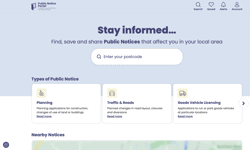Digital editions have been around since 2001, with most of the UK broadsheet newspapers launching digital editions in 2003. So digital editions are not a new thing.
NewspaperDirect, for instance, says David Owen, Senior VP Publishing, has been going for four years. Over that time, functionality has improved dramatically. "We started with just a flat PDF file," he says; now, there’s more interaction, richer media, and the opportunity to embed links. Newsreels can be added to the digital edition where photos are used in the original. NewspaperDirect also supplies more devices – not just PCs, but iPhones and Blackberries too.
Devin Holmes, a consultant, says, "We’ve seen a generational shift from PDF to Flash based editions," which enable all kinds of web based functions.
Reader insights
The new generation of digital editions also deliver considerable reader insight. Phillip McGeachy, managing director of Digital Initiatives, says that digital publishing software now gives publishers huge amounts of data on what is being read.
The software tracks readers’ moves around the publication; what articles are being zoomed in on, how long the reader spends on them. David Owen says, "We've started to measure what people are reading every day, and created a readership map" - showing the areas of the publication that attract most interest.
Devin Holmes suggests that this data could be used to segment newspapers’ readership. Research for the Boston Globe showed that there were eight main types of reader – for instance the sports fan and the newsjunkie – who read the paper in different ways. With digital editions, a separate newspaper with a different running order could be created for each type of reader; the cost of doing so in print would be prohibitive.
Digital distribution
It’s interesting that many of the software and production businesses are attached to digital distributors. For instance, NewspaperDirect hosts 460 newspapers on its website, while Zinio does the same for magazines. Sarah Clegg, commercial director of Zinio UK, says, "There’s an increasing convergence between software and fulfilment."
Igor Smirnoff, director of strategic development at NewspaperDirect, points out that publishers aren't just choosing software when they contract for their digital editions – they are choosing a development partner. NewspaperDirect has its reader embedded on Microsoft Tablet PCs, and is currently considering taking digital editions into in-flight entertainment - "it’s not just a bureau solution anymore," he says.
However, the place of digital editions in most publishers’ media portfolios remains ill defined. Many still see the digital edition as competing with the publication’s website.
Devin Holmes explains that websites and digital editions offer two quite different user experiences. "A digital edition is much more structured in how it’s designed and how it’s consumed," he says, while websites are more diffuse. But the website can offer social networking features which a digital edition can't. He believes that publishers need both; "The digital edition can drive traffic to your website and vice versa."
Business models
Business models for digital editions vary widely. National newspapers have chosen to charge for their digital editions; some B2B magazines are including access to digital editions with the print subscription. Some B2C magazines are offering paid-for digital editions, others free ones; and Monkey introduced the free digital-only magazine. Phillip McGeachy says, "Everyone is still working out which model is going to work."
Cannibalisation still remains a big issue for many publishers. David Owen says, "Most newspapers are charging because they don't want to harm their print edition." That’s not an issue for controlled circulation titles, of course; Richard Stephenson, chairman of Yudu Media, says he believes they are embracing digital editions faster than paid-for titles.
Devin Holmes believes that in future, ads in digital editions will take off. "The user interaction model is very similar to that in print," he says – giving advertisers ‘real estate’ they can use, contrasted with popups or banners. And there is also a control issue; "You can be sure what is coming up next to you, just as you can in print, because it’s structured content."
Variable take up
There has been some variation between sectors in the speed with which they have adopted digital editions. Newspapers were quick to explore the possibilities, but Richard Stephenson says, "They have yet to find sound monetisation models."
Other sectors have been patchier. Within magazines, there’s also a sector split. Sarah Clegg says that, "as you would expect it's tech titles, business titles and men's magazines which have been successful. There's not been much effort on women's titles yet." She believes that the most successful digital editions will be those for magazines which have already found success with other online properties, such as websites.
She believes marketing of digital editions is also far more successful online than offline. "Website readers are more likely to switch to a digital edition," she says, "and also, you're creating a new platform rather than just cannibalising what you have in print."
Dominic Duffy, managing director of Cerosmedia.com, says publishers with digital editions need to have as good an understanding of the online environment as they do of print. Jellyfish didn't understand online well enough, he says – Monkey, on the other hand, is going from strength to strength because "Dennis is so smart online, and has its own online marketing house." The magazine can have print content and look like a print magazine, but it has to be marketed as an online product – and that may involve hiring new marketing personnel.
Target audience
So far, digital editions have mainly been aimed at particular target audiences. Newspapers, in particular, have targeted expatriates. Some papers now offer joint paper and digital subscriptions for travellers – Devin Holmes mentions the ‘snowbirds’ who spend the summer in Massachusetts, but winter in Florida, and can access the Boston Globe there through digital editions.
Igor Smirnoff points out that papers can reduce their distribution costs substantially by switching subscribers from remote print to digital editions. The introduction of a digital edition has enabled the New York Post to cut its west coast print run, saving substantial costs. And Australian publishers are looking at digital editions as a way of delivering content to remote areas.
Digital B2B, meanwhile, is particularly useful to ‘road warriors’, and NewspaperDirect has found a key market for digital editions in libraries and education, as archive materials. Graham Duffill points to one of Olive Software’s major successes – the digitised archives for the Scotsman. As Devin Holmes states, "The key is about relevance to your targeted audience. There’s not a single strategy that works."
Reader reaction
Functionality has improved, and publishers are being won over. But so far, readers don't seem overly impressed. Readership of digital editions has remained low compared to both print editions and websites. David Owen admits that "not a lot of the e-editions are getting a big readership. You'll see two to five thousand readers on a top title every day choosing to read this way." Compared to print circulation of around 900,000 at the Daily Telegraph, or 14m unique users of Guardian Unlimited, it’s hardly significant. Richard Foan of ABC Electronic says "I don't think digital editions have taken off the way some people expected them to."
The US has adopted digital editions a little more quickly. ABC data show 500,000 paid-for digital out of a total 45m newspaper subscriptions – just over ten percent - and digital edition magazine subscriptions are running at around the same level.
David Owen hopes digital editions in the UK will achieve the same levels as the US. But bullish as he is, he doesn't see newspapers going wholly – or even majority – digital. Richard Stephenson also believes titles will break the 10% barrier – as early as 2008.
Audit issues
Audit issues are seen by some as holding the market back. Sarah Clegg believes that since digital edition sales are not counted as part of consumer magazine circulation, publishers are unwilling to invest in the area.
However, ABC has made changes in other areas. Richard Foan says that "ABC UK allows B2B magazines to produce an unduplicated figure including the digital edition. If it's controlled circulation, you know who you're sending it to and whether there's duplication." However, it would be more difficult to produce an unduplicated number for a publication distributed through newsagents.
Even so, he says, "some advertisers are already looking at aggregated figures" rather than simply the net circulation total. (ABC has allowed digital editions to be reported on print certificates since 2004 even where the digital edition cannot be reported as part of the average net circulation figure.)
Digital only
Where the plot thickens is that digital-only magazine Monkey is not audited as a magazine. Richard Foan says, "It's not a digital edition as we see it – it's an online property that has the look and feel of a magazine." But the arrival of digital-only publications raises interesting issues about how digital editions ought to be defined.
And so far, the jury is out on how well the digital-only strategy works, since the second digital-only magazine, Jellyfish, has just been discontinued. Dominic Duffy says the magazine got its digital distribution badly wrong, using a poor quality email list and outsourced distributor. He believes only three or four percent of the emails ever got through. So the end of Jellyfish isn't indicative of a failure of the business model as a whole.
In fact, he says, Monkey "is going to be hitting 250,000 a week, and it’s getting quite chunky advertising. With no distribution costs, you have quite a compelling business model."
Phillip McGeachy believes we will see some B2B media going digital-only. In other sectors, he thinks "publishers may reduce their print run rather than getting rid of it entirely; let the readership make the decision how they want to read your publication." Richard Stephenson, too, believes that "digital editions are a potential lifeline for a print title with a falling circulation."
Meanwhile, technology isn't standing still. Abie Helberg, director of technology at the Digital Publishing Company, believes that "Web 2.0 still hasn't really come to e-editions, and that's the stuff that could change the market."
Igor Smirnoff points out that NewspaperDirect’s Pressdisplay reader already includes a toolbar with collaborative and sharing functions such as del.icio.us tagging and a ‘blog this’ button. The publication becomes a resource that can be shared – with the advantage that publishers can see where their content is being posted.
However, Sarah Clegg believes that "the big breakthrough with digital editions will be with electronic paper," offering readers a truly print-like digital experience. Fujitsu has already displayed e-paper to the trade; unlike a PC or mobile, it doesn't need to be powered up to be read, since once information has been loaded, it remains on display until it is changed by the user. Some industry analysts think e-paper won't make an impact on the market till 2015, but she thinks it will be much earlier.
Digital editions so far have been the poor cousins of both print and website. There’s certainly a place for digital editions in the media universe – but it remains to be seen whether it will be at the top table, or whether they’ll remain poor relations.
FEATURE
Digital Editions
The first sight of an all singing, all dancing digital edition is a truly memorable experience. The pages turn, you can zoom in and out, place your electronic bookmarks, play audio clips and look at video, all from what is unmistakably a magazine. Furthermore, you can stock your four zillion back issues in a few gigabytes and find the long lost article from that early 80s edition in a few keystrokes. Wow! Surely, you think, this is going to be MASSIVE. Andrea Kirkby looks at where digital editions have got to.










